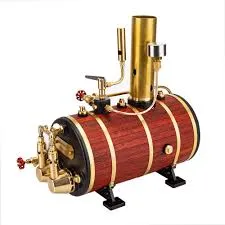
Dec . 06, 2024 11:31 Back to list
Diagram of an Oil-Fired Hot Water Boiler System for Efficient Heating Solutions
Understanding Oil-Fired Hot Water Boiler Systems A Diagrammatic Approach
Oil-fired hot water boilers are essential components in many residential and industrial heating systems. Their primary function is to provide hot water for heating purposes, whether for radiators, underfloor heating, or domestic hot water needs. Understanding the workings of these systems can be greatly enhanced by looking at a typical diagram of an oil-fired hot water boiler, which we will discuss in detail.
At the heart of an oil-fired hot water boiler is the combustion chamber, where fuel oil is burned to generate heat. The diagram typically showcases this chamber as a well-insulated compartment. Oil from the storage tank is pumped into the combustion chamber, where it is atomized into fine droplets to promote efficient burning. This process of atomization is crucial, as it ensures that the oil burns completely, maximizing heat output while minimizing pollutants.
Understanding Oil-Fired Hot Water Boiler Systems A Diagrammatic Approach
The heat exchanger is designed to transfer the heat produced from the burning oil to the water circulating through the system. In most diagrams, you will notice pipes running through the heat exchanger, allowing water to flow past the heated surfaces. As the water travels through this component, it absorbs heat, which significantly raises its temperature. The efficient design of the heat exchanger is fundamental to the overall performance of the boiler.
oil fired hot water boiler diagram

After the water is heated, it then moves into a system of pipes that distribute hot water to various locations within a building. The diagram illustrates the network of piping connected to radiators, baseboards, or a water tank for domestic hot water use. This distribution system is often equipped with pumps, which play a vital role in maintaining water circulation. A circulating pump moves the hot water from the boiler to where it is needed and returns cooled water back to the boiler for reheating. A properly configured pump ensures efficient operation and even heating throughout the system.
Another important aspect depicted in the diagram is the thermostat. This device monitors the temperature of the water and controls the operation of the boiler. When the water temperature drops below a set point, the thermostat signals the oil burner to ignite and start heating the water. Conversely, once the desired temperature is reached, the burner shuts off, preventing unnecessary fuel consumption. This feedback mechanism ensures that the system operates efficiently, reducing energy waste.
Moreover, oil-fired hot water boilers are equipped with safety features such as pressure relief valves, which help to prevent over-pressurization, and low-water cutoff switches that turn off the boiler when the water level is too low. These elements, often represented in the diagram, are crucial for safe operation and compliance with local regulations.
In conclusion, an oil-fired hot water boiler diagram provides an invaluable visual tool for understanding how these heating systems operate. By breaking down the components—including the combustion chamber, burner assembly, heat exchanger, distribution system, and safety devices—we gain insight into the intricate processes that deliver hot water for heating. For both homeowners and professionals, this knowledge is essential for efficient operation, maintenance, and troubleshooting of oil-fired heating systems.
-
High-Efficiency Commercial Oil Fired Steam Boiler for Industry
NewsJul.30,2025
-
High-Efficiency Biomass Fired Thermal Oil Boiler Solutions
NewsJul.30,2025
-
High Efficiency Gas Fired Thermal Oil Boiler for Industrial Heating
NewsJul.29,2025
-
High-Efficiency Gas Fired Hot Water Boiler for Sale – Reliable & Affordable
NewsJul.29,2025
-
High Efficiency Biomass Fired Hot Water Boiler for Industrial and Commercial Use
NewsJul.29,2025
-
High-Efficiency Biomass Fired Hot Water Boiler for Industrial Use
NewsJul.28,2025
Related PRODUCTS






















